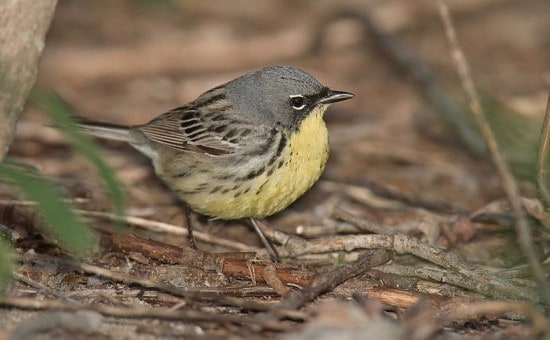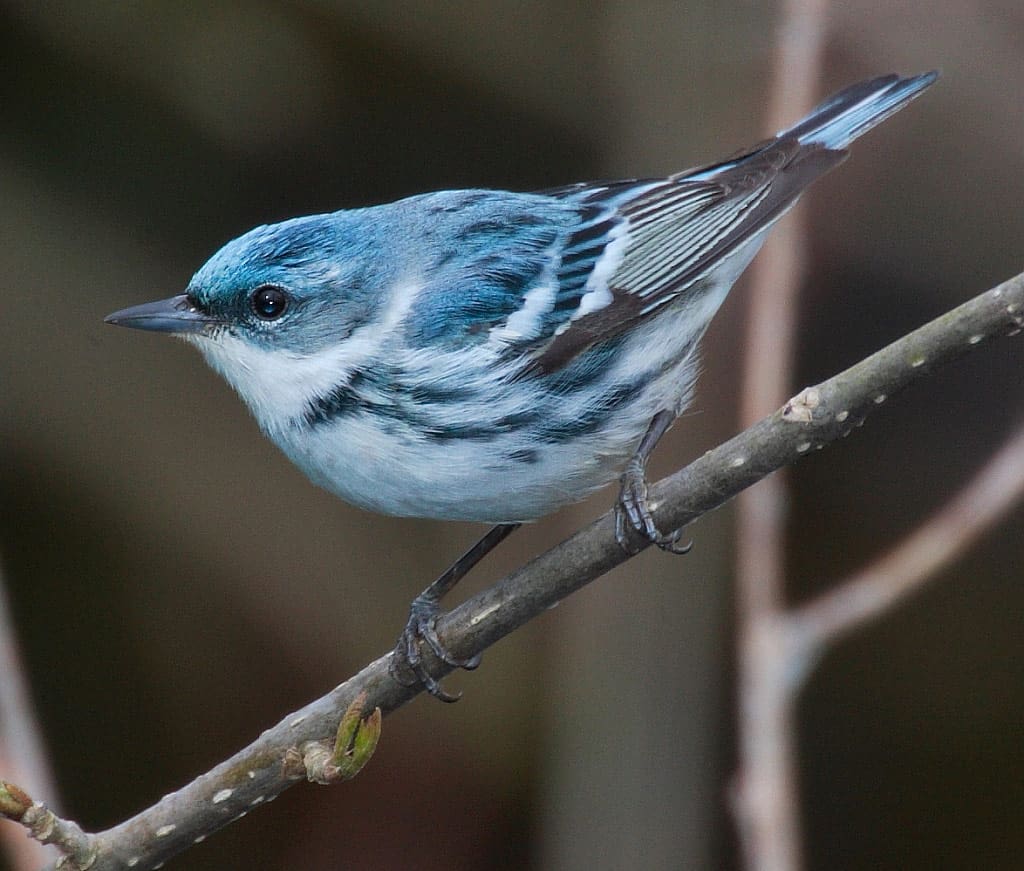The endangered Kirtland’s warbler is one of the rarest members of the wood warbler (Parulidae) family. It is a fascinating bird for a few reasons: First, it nests in just a few counties in Michigan’s northern Lower and Upper Peninsulas. Also, it is closely tied to a narrow and distinctive habitat of young jack pine barrens where it conceals its nest in the lush understory. It has been on the endangered species list since 1967. You can view a profile of this species on our site.
In the 1950’s and 1960’s, Kirtland’s warbler numbers dropped precipitously, but in recent years habitat management has led to a promising increase in the number of singing males. Management efforts have focused on habitat improvements and control of the local brown-headed cowbird population.
Cowbirds are brood parasites, which means they lay their eggs in other species’ nests and shift the burden of parental care onto the host species. This strategy, while good for cowbirds, has had a devastating effect on the breeding success of other species. <
Prescribed fire burns have been used to regenerate forests of young jack pines, which require fire to open their cones and spread their seeds. This, in combination with brown-headed cowbird control projects (led by the United States Forest Service and the United States Fish and Wildlife Service in cooperation with the Michigan Department of Natural Resources and the Michigan Audubon Society), have resulted in an increase of the number of singing males from just a few hundred in the late 1980s to a total of 1,341 males, according to the 2004 annual breeding census. The Kirtland’s warbler will remain on the endangered species list until at least 1,000 nesting pairs are documented.
In spring, Kirtland’s warblers migrate from the Bahamas to northern Michigan. Fortunately, a specially appointed Kirtland’s Warbler Recovery Team has a collaborative working relationship with Bahamians to document the warbler’s wintering habitat and assure its protection in the Caribbean.
Guided Tours
The best way to see this rare gem of a bird is to take one of the upcoming tours offered by the The U.S. Fish and Wildlife Service and The U.S. Forest Service, as Kirtland’s warbler nesting areas in northern Michigan will be closed to the public during the nesting season. Upper Michigan is a fantastic vacation spot and it’s good to know that some of your travel dollars will help support further conservation efforts for this species.
The average date when the first Kirtland’s warbler arrives at its breeding grounds is May 12; the latest record of first arrival is May 20. During this time, the chance of seeing the bird is less than ideal. The best period for seeing the warbler is during late May and the month of June. After July 1, viewing opportunities diminish.




